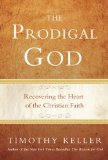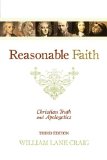Some time ago I mentioned that my copy of Biblica’s The Books of the Bible was en route to my home. I thought a review would be in order, since I’ve now had a few months with it. You’ll recall that this Bible (TNIV available for all of $9; premium edition for $15) has all chapter and verse numbers removed, with the text presented in one column. In addition, the books that are traditionally divided into two (e.g., 1 & 2 Kings) are now presented as a unit, since book length in the 21st century is no longer bounded by the limits of scroll making. Also, footnotes (e.g., “Some manuscripts…”) have been changed to end notes. In short, as little as is possible is put between you and the text as it was written centuries ago.
I love this Bible, and have been commending it to just about every class I’ve taught since I received it. As many have asserted, and rightly in my opinion, having verse and chapter divisions are no help to our reading and understanding a text on its own terms, especially when these divisions were not the author’s intention. We don’t read other books, letters or articles in this manner, why should we read the Bible differently? Why atomize that which the author intended to be read as a whole? For more on this, you’ll do well to read what Gordon Fee has to say (rant?) about it.
More subtly, I’ve found that I really enjoy reading this Bible more than my traditional Bibles; there is something refreshing about it. As hard as I might try, I have difficulty divorcing myself from my modern reading habits, where “good reading” is (wrongly) equated with quantity: How many chapters did I read? How much did I get through? Having verse and chapter numbers is no help to slaying the quantity over quality dragon. Even more, it’s simply refreshing to read a text as it was written. It’s much easier to pick up the flow of thought and what the author is saying, while much more difficult to insert artificial stopping points (i.e., the end of a chapter) where they weren’t intended.
The order of the books is also changed, which is a double-edged sword. On the one hand, it is wonderful to have things arranged with a view towards chronology and understanding, rather than simply size and genre. On the other, if you know your traditional Bible well, prepare to spend lots of time in the table of contents. Luke doesn’t follow Mark anymore (and actually, Luke-Acts is put together), and John’s gospel is way towards the end. The benefit of having a book order that helps in overall flow and understanding far, far outweighs the inconvenience of the 30 extra seconds it takes me to find 2 Peter or Zechariah.
I will say as well that this will not serve as a good “reference Bible,” as it were. If you’re trying to locate a text, or quote a text for a paper, sermon, or class, you’ll get a little bit of help from the dim text at the bottom of the page that gives the chapter and verse range, but that’s all. Don’t throw away your traditional Bible. It is quite entrenched in Christendom, and you will still need it.
In my edition, there are introductions before each book as well as introductions to the major Biblical “chunks”: OT, NT, Pentateuch, etc. These are immensely helpful, and wonderfully written. It’s almost like having a smaller version of How to Read the Bible Book by Book embedded in your Bible. Frankly, this Bible would be worth it for the introductions alone.
In summary, I can hardly commend this Bible strongly enough. The major downsides fall under categories that exist only for efficiency-obsessed Westerners, which is another way of saying that there aren’t any downsides. Debatable downsides include that this is only available in TNIV (great for me, but there are some who dislike this translation), and I’m sure some will take issue with the order of the books. However, the upsides are huge, and all available for the price of a large pizza.













